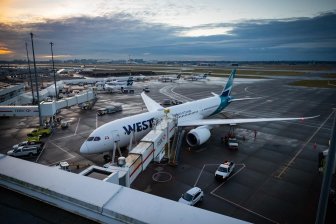The head of a downtown Toronto residents’ group says congestion is crippling his neighbourhood and is calling on officials to take immediate action before two long-awaited schools open.

“One of the issues with congestion in this neighborhood is there is one lane along Fort York (Boulevard) in both ways and those lanes are being used as through traffic,” Gary Pieters, president of the CityPlace Residents Association, recently told Global News.
“So as through traffic, it means it takes quite a long time for cars and vehicles to move through the neighbourhood … In terms of pedestrians, the sidewalks are always congested.”
CityPlace is roughly bounded by the CN rail corridor, Spadina Avenue, the Gardiner Expressway and Bathurst Street. It has grown from being an abandoned railway lot of land into a downtown community boasting over 30,000 residents.
City of Toronto transportation planning spokesperson Nigel Tahair said the neighbourhood was originally anticipated to be an extension of the downtown office core, but it evolved into a residential and mixed-use community.
Jean Lumb Public School and Bishop Madconell Catholic Elementary School, along with the Canoe Landing Community and Recreation Centre and Child Care Centre, were originally scheduled to open on Tuesday. However, the Toronto District School Board and Toronto Catholic District School Board said both are now slated to open in early 2020 due to delays. The two schools are expected to each have 550 students enrolled from Kindergarten to Grade 8.
With more than a thousand children being dropped off and picked up by parents each weekday either by car or by walking, Pieters said he is concerned about safety issues associated with increased traffic. He added numerous residents have asked what will be done and what can be done now.
WATCH: Toronto city planner dives into infrastructure plans for CityPlace neighbourhood

He called for more pedestrian crossings to be introduced, specifically at Fort York Boulevard and Brunel Court where the schools and centre are located. He also added Brunel Court could have extended south to connect directly to Lake Shore Boulevard West so parents could drop off their children and continue on.
Pieters pointed to a number of other issues impacting congestion, including the constant construction around the CityPlace neighbourhood and a broken pedestrian crosswalk — the only crosswalk at the intersection of Spadina Avenue and Fort York Boulevard/Bremner Boulevard — which he said has decreased the time for pedestrians to cross the busy intersection.
He said he has voiced his concerns to the City of Toronto and to the area councillor, Joe Cressy. And while he has heard back, Pieters said it has all been “really very, very good language, good words but there’s no follow through.”
“City planners are coming out, traffic studies are being done. But when it comes to action, there is nothing being done to alleviate the plight of residents of CityPlace,” he said.
WATCH: Coun. Joe Cressy weighs in on CityPlace congestion

Speaking with Global News, Cressy said he believes the introduction of the schools and community centre will help to alleviate the congestion plaguing the area.
“Fundamentally the childcare and the schools are serving a vertical community that will be primarily walking to school and walking to childcare, that’s the whole purpose,” he said.
“Until the social infrastructure has been here, people have had to commute out of CityPlace to get to work, to get to school, to get to childcare as opposed to being able to walk right to it.”
He said the development also has an established bus route and an interior drop-off plan for children built into the program.
“The fact of the matter is that traffic downtown is not caused by people who live downtown or social infrastructure like schools downtown. It is caused by people commuting in and out of work,” Cressy said.
“So what we know from the stats out there, that less than a quarter of residents of downtown Toronto even drive to work and that number is going down every year.”
He pointed to a number of initiatives already introduced into CityPlace that were created to help decrease traffic and increase safety at the same time.
The new regional express rail stop will be implemented at Spadina Avenue and Front Street, just north of CityPlace. The TTC’s 121 bus route was introduced two years ago and travels along Fort York Boulevard. He also highlighted the addition of traffic lights at Dan Leckie Way and Fort York Boulevard due to the increase in residents and families in the area.
Cressy also said his motion for a new pedestrian crossing at the south side of Fort York Boulevard/Bremner Boulevard and Spadina Avenue was approved. However, there is no timetable for when it will be functional.
There were reports of the median along Fort York being converted into a streetcar line. Tahair said the neighbourhood was always envisioned to have an LRT through the middle of Fort York Boulevard. He said it is still in the long-term planning outlook for the area.
However, TTC spokesperson Stuart Green confirmed to Global News that the “funding was never identified” therefore there is no “active” push to move forward with the plan.
Meanwhile, Tahair said the City will continue to work with officials and the TTC to better the congestion issues.
“I think the key message is that when the schools open (it’s) patience for everyone in that first week and we will move on from there,” he said.
As for Pieters, he said he just wants the City to act, regardless of when the schools and community centre will open.




Comments